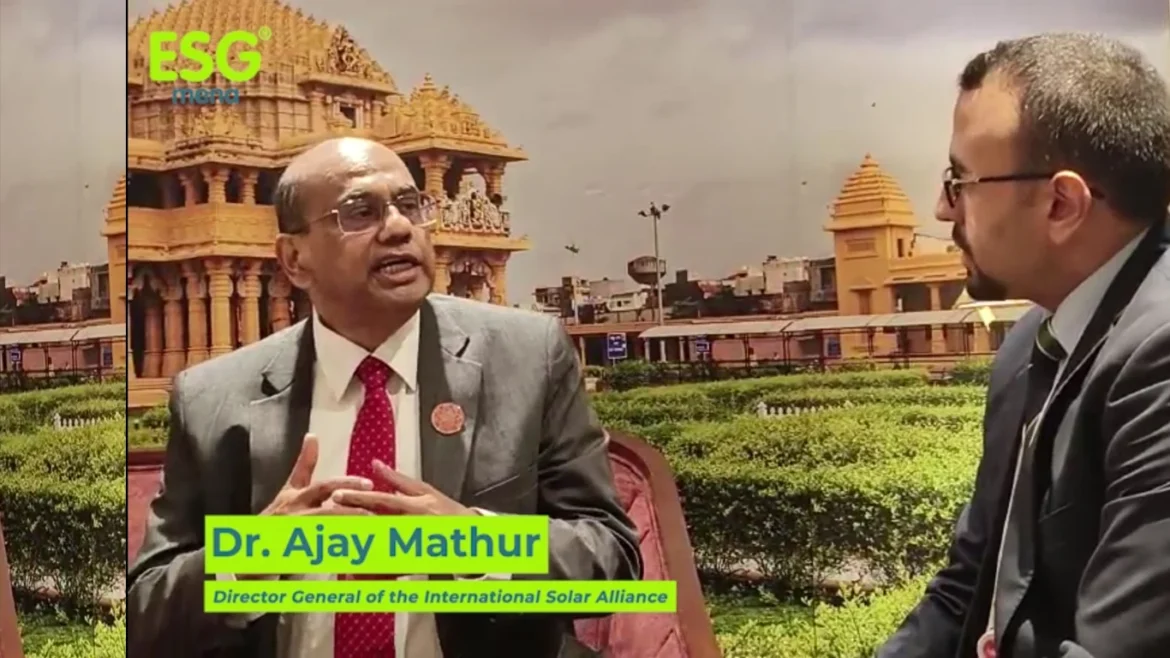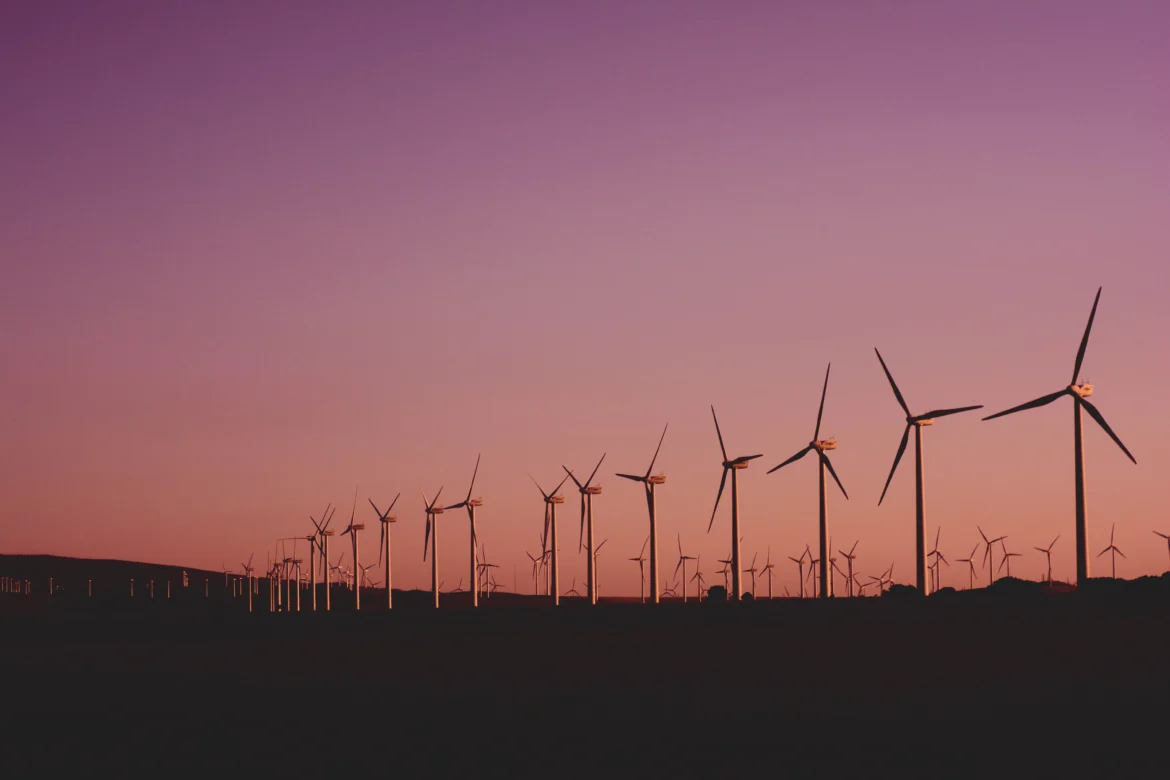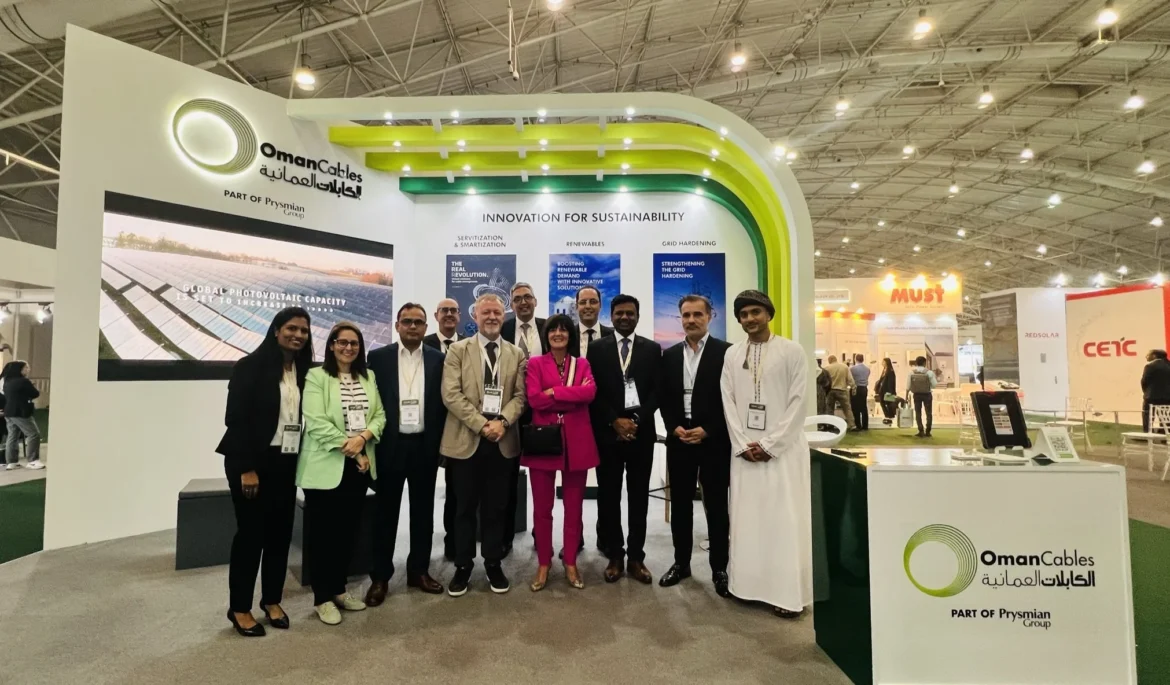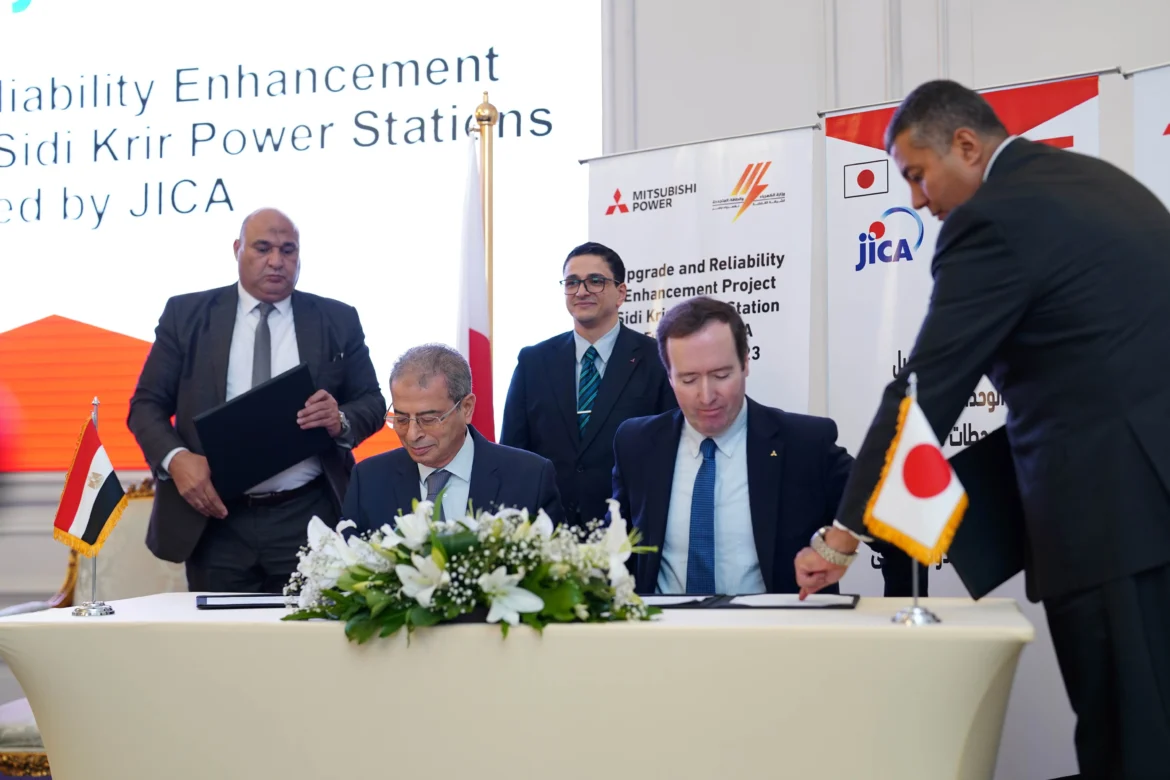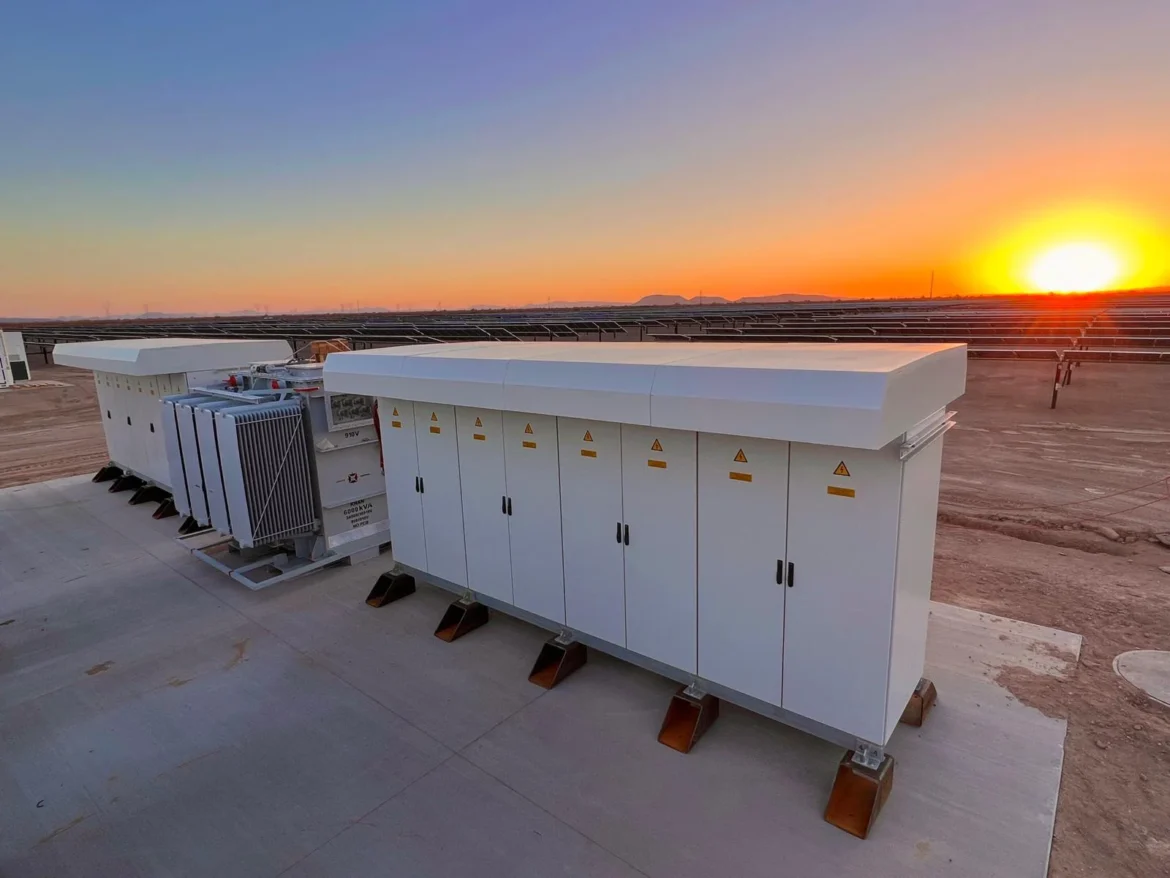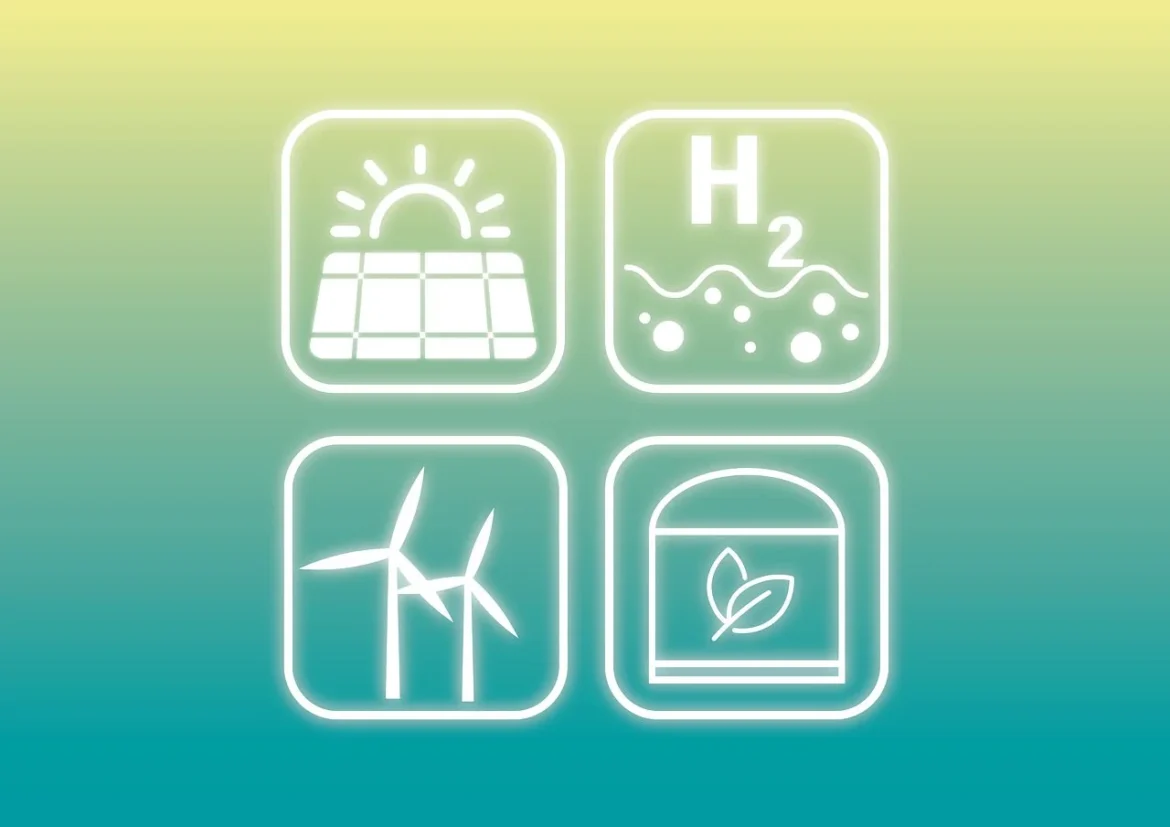Category:
Energy
Ministry of Energy and Infrastructure briefed on Lootah Biofuels’ sustainable energy development efforts
written by Madaline Dunn
A high-level delegation from the UAE Ministry of Energy and Infrastructure, led by H.E. Eng. Saif Ghobash, Assistant Undersecretary for the Oil, Gas and Mineral Resources Sector, was briefed on the sustainable solutions offered by Lootah Biofuels.
The visit, attended by a number of officials from the Ministry of Energy and Infrastructure, is part of the Ministry’s ongoing efforts to learn about pioneering clean energy experiences, achievements and challenges in the field and support partnerships between the public and private sectors, with the aims of strengthening the UAE’s position as a global economic hub and achieve the Sustainable Development Goals (SDGs).
H.E. Eng. Saif Ghobash, Assistant Undersecretary of the Ministry of Energy and Infrastructure for the Oil, Gas and Mineral Resources Sector, said: “The UAE is committed to achieving the SDGs and the Net-Zero 2050 goals and partnering with the private sector contributes to driving innovation and deploy advanced technologies to ensure that our efforts and initiatives in this regard are accelerated. We are working to explore solutions to the sustainability and clean energy challenges faced by leading companies and institutions to overcome them and work closely with them to achieve the UAE’s strategic clean energy goals.”
He stressed that Lootah Biofuels’ efforts support the goals of the UAE Energy Strategy, as well as the National Biofuels Policy and Roadmap for the Transition to Sustainable Aviation Fuels set out by the Ministry of Energy and Infrastructure, which support strengthening the UAE’s position as a leading producer and exporter of clean energy.
Yousuf bin Saeed Lootah, CEO of Lootah Biofuels, briefed the delegation on the sustainable solutions the company offers to meet long-term energy needs, as well as the use of clean energy alternatives, as the production of biofuels through the use of used cooking oil has a positive dimension in terms of waste recycling, in line with the UAE’s strategies on sustainable development, energy, climate neutrality and circular economy.
He explained that Lootah Biofuels has an extensive network of partners who supply used cooking oil for recycling and biofuel production, with more than 110 partners providing about 500,000 litres of used cooking oil monthly for recycling and biofuel production.
The company has set up more than seven biofuel stations in Dubai and Sharjah and plans to operate them in the rest of the emirates and set up a new factory in Abu Dhabi.
“We have an extensive list of customers in the country, which includes more than 200 companies that use biofuels in their transport fleets. We continue to expand our customer base while increasing our production, which currently reaches 6 million litres per year, while exporting biofuels to customers in the Netherlands, Germany, the UK and India,” he said.
Yousuf Saeed Lootah added: “The UAE Circular Economy Policy 2021-2031, which sets the overall framework for sustainable practices and supports the private sector in implementing circular economy principles and practices, confirms the UAE’s commitment to building a solid foundation for the future. We will continue to accelerate the development and deployment of advanced biofuels and green energy technologies and meet the growing demand for sustainable energy sources by producing high-quality, low-carbon biofuels.”
On producing aviation biofuel in the country, he said: “We recognise the importance of producing biofuels for the civil aviation sector, which is one of the highest fuel-consuming sectors, and this is in line with trends to reduce airline carbon emissions as studies show that replacing traditional jet fuel with sustainable fuel will reduce carbon emissions by up to 80% at the sector level.”
The delegation from the Ministry of Energy and Infrastructure included Eng. Amal Al Ali, Director of the Department of Oil and Gas Affairs, Saeed Al Qamzi, Head of the Department of Oil and Gas Affairs, Jaber Al Hammadi, Head of the Department of Economic Studies, and a number of officials from the Ministry.
“A catalyst for change”: Accelerating action on clean energy at the 11th CEBC Annual Summit
written by Madaline Dunn
Despite some recent optimistic forecasts on clean energy, action is vital if we are to turn this vision into reality.
The upcoming Clean Energy Business Council (CEBC) Annual Summit will bring together key players to facilitate important and impactful conversations on clean energy in the lead-up to what many are calling the most important global climate summit to date.
Under the banner, “MENA’s Climate Pledge: Amplifying Actions, Impact, and Leadership for COP28 and Beyond,” the event will be held at the Shangri-La Hotel, Dubai, UAE, on Wednesday, November 8, 2023.
With a week to go until the event, ESG Mena, a strategic partner with the CEBC, runs through what you can expect from the event and outlines its importance ahead of COP28.
Summit comes at a pivotal moment
Right now, all eyes are on the MENA, having already hosted one COP in Sharm El-Sheikh, Egypt, last year, and a second quickly approaching, to be held in Dubai, UAE.
The summits come as global temperatures soar, and researchers reveal that the earth’s “vital signs” are worse than they’ve ever been in human history.
The MENA is also one of the regions set to be worst affected by climate change while simultaneously being a cornerstone of the global energy system, home to around half the world’s proven oil and gas reserves. But, as governments ramp up their economic diversification plans, action on clean energy is progressing.
However, this needs to accelerate to limit global warming, protect the planet and secure a safe, equitable future.
Against this backdrop, it’s crunch time for climate conversations.
The Clean Energy Business Council (CEBC) Annual Summit, now in its 11th edition, will be the place where the private sector, government entities, climate envoy teams, and other key players will congregate to discuss these key issues ahead of COP28 and highlight the MENA’s pivotal role in the energy transition.
What’s to come?
The event will emphasise the importance of swift, concerted action and collaborative leadership in battling against the intensifying climate crisis, showcasing innovative clean energy solutions, strategic policies, and cross-industry partnerships in the MENA region and their role in the fight.
Alongside fostering conversation and raising awareness, the event is also set to provide pathways for turning pledges and intentions into action and progress.
The day will feature a number of panel discussions, including on clean hydrogen, exploring both its applications and market potential, as well as implementation challenges. Climate finance will also be a central element, with a panel discussion on financing the green transition and the role of investors in driving forward change.
Elsewhere, toward the end of the day, the summit will explore strategies for sustainable mobility and approaches to navigating barriers to adoption.
Aligning with the event’s overarching theme, the day will also include a fireside chat reflecting on UAE action so far and looking ahead to COP28, called ‘The Solutions-Orientated Conference of the Parties of the UNFCCC: COP28’.
Further, the event will host a number of presentations on everything from climate tech to carbon markets.
For more information about the event itinerary, head over here.
Paving the path towards change
The event will bring together a number of subject-matter experts, thought leaders, and key energy industry players, including Saif Al Qudah, the energy transition specialist at COP28 UAE, Carlos Gascó Travesedo, Energy Policy Executive Director at Department of Energy Abu Dhabi, Cornelius Matthes, the CEO of Dii Desert Energy / Desertec3.0, Habiba Al Marashi, Co-Founder and Chairperson of Emirates Environmental Group, and many more, as a crucial event in the lead-up to COP28.
Commenting on the upcoming event, Dr. Nasser Al Saidi, Founder and Chairman of the CEBC, said: “The 11th CEBC Annual Summit is a testament to the CEBC and its members’ unwavering commitment to action to counter the growing impact of climate change on our MENA region. We need climate risk mitigation as well as adaptation. Our CEBC Summit is not just an event; hopefully, it will act as a catalyst for change.”
Adding: “Together, we’ll bring the private sector, governmental entities, climate envoy teams, and other key stakeholders to the table, shaping the discussions and consultations that will influence COP28 outcomes. Join me in highlighting our collective dedication to the ongoing energy transition, addressing climate change through policies and investment to make a lasting impact on our world’s sustainable future.”
Stay tuned for more event updates from ESG Mena.
China’s model of economic growth has been a resounding success. With its focus on export promotion, capital investment, and technological catch-up, it has lifted some 800 million people out of poverty over the past 40 years. More recently, it has done wonders for clean-energy deployment at home, as well as driving down the costs of renewables and batteries globally. In 2023 alone, China will have installed over 150 gigawatts of solar capacity – almost half the world’s total for the year.
But China’s outlook is not as rosy as these figures might suggest. Its growth engine has begun to sputter, with the International Monetary Fund’s latest projection putting this year’s GDP gain at only 5%, a far cry from the double-digit increases of recent memory. Worse, the growth rate probably will continue to drift down toward the level of advanced economies, leading many to question whether China will ever catch up to the United States in GDP terms – even with a population that is four times larger.
Chinese carbon dioxide emissions also continue to grow, now accounting for almost one-third of the world’s total. Even with the enormous push into renewables, China’s electricity consumption has risen so fast as to require an “all-of-the-above” strategy that includes large amounts of coal-fired power (notwithstanding its increasingly unfavorable economics).
China’s growth and emissions problems have a common source: unproductive investment. Although China is still a middle-income country with abundant high-return projects, investment in the last decade has been concentrated in the property sector. Accounting for up to 25% of GDP in the 2010s, housing investments went far beyond the needs of China’s urbanizing middle class. Local governments’ encouragement of developers, coupled with cheap finance from state-owned banks, fueled a property bubble that sucked in resources that would have been put to better use in other economic sectors. This bubble now appears to be deflating, dragging down consumer confidence and risking a classic deleveraging spiral, similar to what the West faced after the subprime-mortgage bubble burst in 2008.
The remedy is simple: share the benefits of growth more widely. Chinese consumption represents only 40% of GDP, which is among the lowest rates the world, and well below the US. China’s weak social safety net compels Chinese households to save large amounts of their income, which gets funneled directly into domestic investment by a state-directed financial system. Meanwhile, artificially low bank interest rates, rising public-sector consumption, and other policy choices deliberately tamp down household consumption and push up investment.
Removing these macroeconomic distortions would benefit not only Chinese households, but also the planet. Chinese investment has been hugely costly for the climate. China uses half of the world’s steel and coal, and 60% of its cement. All those apartments, roads, and bridges require enormous amounts of energy and carbon-intensive materials.
Slowing the rate of investment in physical capital would curb some of this outsize damage to the climate. Moreover, as incomes rise, Chinese consumers will shift their spending proportionally to services. Around the world, as households grow richer, they tend to spend more on health care, education, and hospitality, and less on carbon-intensive products. This iron law of development will further slow China’s emissions growth, allowing it to bend the curve downward through concerted decarbonization efforts.
China has already chalked up a big win for decarbonization with its push toward electric vehicles. The country’s EV uptake is unmatched by any other large economy. As of August, EVs and hybrids accounted for nearly 40% of the Chinese car market, up from virtually zero just before the pandemic. Now, China’s state oil company predicts that Chinese oil demand will peak this year, largely because of EVs. Globally, the International Energy Agency expects oil demand to peak by 2028.
True, the push toward EVs comes with tradeoffs, putting further upward pressure on electricity demand. But EVs can play a crucial role in helping to stabilize electricity grids that are increasingly powered by renewable-energy sources. Since most cars are stationary for around 23 hours per day, EVs can serve as battery backups – provided that the necessary “smart grid” investments have been made.
Still, China will need to slow the growth of overall electricity demand in order to phase out coal and cut CO2 emissions. The rich world has witnessed a collapse of coal-fired power, as zero-marginal-cost renewables have combined with stagnant electricity demand to begin forcing dirtier options off the grid. There is plenty more work to do in the West as well, but with rapid cost declines for renewables and batteries showing no sign of slowing, one precondition for China to begin forcing coal off the grid is firmly in place. The other is for China to focus on moving away from investment-led growth and encouraging the development of domestic services.
The result will be a full decoupling of economic growth from growth in energy demand and, thus, CO2 emissions. From a climate perspective, China’s next economic chapter cannot come soon enough.
Gernot Wagner, a climate economist at Columbia Business School, is the author, most recently, of Geoengineering: The Gamble (Polity, 2021). Conor Walsh is an assistant professor at Columbia Business School.
© Project Syndicate 1995–2023
Oman Cables Industry (OCI), a manufacturer of energy cables, and an innovative service provider, as part of the Prysmian Group, has announced that it will present its latest innovations at Saudi Arabia’s largest renewable energy event.
OCI said that its participation in this event aligns with Saudi Arabia’s ongoing transformation, and will strengthen its presence in the market.
The company’s latest technology, it said, is also aligned with Saudi’s Vision 2030 and is dedicated to improving networks through key approaches – strengthening the network through servitisation and smartisation, firming the grid hardening and boosting renewable demand with innovative solutions.
OCI said it is dedicated to making the networks “more service-orientated and technologically advanced” while supporting the transition towards a decarbonised future.
Its products are reportedly used in a wide range of sectors including utilities, renewable projects, oil and gas and new residential developments in the region.
Cinzia Farisè, CEO of Oman Cables Industry and CEO of Prysmian Group MEART Region, said: “As one of the leading solution providers, we are proud to contribute to Saudi’s transition and support its Vision 2030. OCI is showcasing the latest innovations to a vital market which are set to contribute to projects in the oil and gas, renewables, residential and power grid sectors. These projects not only align with our goals but also reflect our commitment to the regional energy transformation.”
The Solar Show and Future Energy Show KSA takes place at the Riyadh International Convention and Exhibition Centre from 30 – 31 October 2023. OCI’s experts will be available to showcase the company’s latest innovations at stand # K-60.
Mitsubishi Power and Egypt Ministry of Electricity and Renewable Energy sign contract agreement for Sidi Krir and El-Atf Power Plants
written by Madaline Dunn
Mitsubishi Power, a power solution brand of Mitsubishi Heavy Industries, Ltd. (MHI) has announced a contract agreement with the Egyptian Ministry of Electricity and Renewable Energy, for the upgrade and reliability of the Sidi Krir and El-Atf power plants. This extends the previous agreement signed in 2021.
The agreement extension was signed at a ceremony at the St Regis Almasa Hotel in Egypt’s New Administrative Capital in Cairo and was attended by H.E. Dr. Mohamed Shaker, Egyptian Minister of Electricity and Renewable Energy, Eng. Gaber Desouki, Chairman of the Egyptian Electricity Holding Company (EEHC), Mr. SHIMIZU Kazuhiko, Counsellor, Embassy of Japan in Egypt, Mr. KATO Ken, Chief Representative of Japan International Cooperation Agency (JICA) Egypt Office, and Dr. Javier Cavada, President and CEO of Europe, Middle East and Africa at Mitsubishi Power, Khalid Salem, President at Mitsubishi Power MENA, accompanied by high ranking officials and representatives from the Ministry of Electricity and Renewable Energy, EEHC which leads the power generation and transmission operations in Egypt, the Embassy of Japan in Egypt (EoJ), JICA Cairo Office, and senior executives from Mitsubishi Power.
This JICA-financed agreement extension, follows the successful ongoing execution of a long-term service agreement (LTSA) signed in May 2021 for six M701F Gas Turbines at Cairo North, Sidi Krir and El-Atf power plants. It extended the power plants’ lifespan, improved power supply stability, reduced maintenance downtime and costs, and positively contributed to recovering performance.
H.E. Dr. Mohamed Shaker, Egyptian Minister of Electricity and Renewable Energy, commented on the agreement with Mitsubishi Power saying: “Egypt and Japan celebrate strong bilateral relations across multiple sectors. Our longstanding partnerships have not only strengthened bonds of friendship and alliance, but have propelled growth, particularly in the power and critical infrastructure sectors; thus, contributing to the socio-economic development of our nation. Our partnership with Mitsubishi Power enables us to harness the power of innovation, technology, and expertise of our Japanese partners to enhance power generation and efficiency to ensure energy security and availability to power Egypt’s growing demand for electricity.”
H.E. Dr. Shaker added: “We are also very looking further for more collaboration with Mitsubishi Power and Japan in the field of decarbonization and green hydrogen infrastructure development.”
Sidi Krir and El-Atf plants power hundreds of thousands of homes and businesses in the western Alexandria and middle Delta regions via the reliable Egyptian unified electrical grid. Upon completion of the plants upgrades, the gas turbines efficiency improved by +2.5% on average with an increase in the power generation capacity of +6% (MW).
Dr. Javier Cavada, President and CEO of Europe, Middle East and Africa at Mitsubishi Power, said: “We are proud to be here today with our Egyptian partners to celebrate the success and continuation of our collaboration to support the critical power sector in Egypt, which is a pillar of the country’s economic development. This latest agreement harnesses Mitsubishi Power’s heritage in Egypt, built on delivering our industry-leading, reliable technology and service excellence and ensure the availability of power for the people of Egypt.”
Dr. Cavada added: “We are committed to continue supporting the growth and advancement of Egypt’s energy sector, as it pursues its ambitious energy transition and fulfill its vision to build a hydrogen ecosystem and regional decarbonization hub, with our cutting-edge and comprehensive carbon neutral technologies.”
Mr. KATO Ken, JICA Chief Representative Egypt Office said: “Relations between JICA and the Government of Egypt have strengthened in recent years, and we have made significant progress towards expanding cooperation on sustainable development and Climate Change, particularly in the field of energy. In pursuit of the Paris Agreement and towards the fulfillment of Egypt’s Climate Strategy and Nationally determined contributions, this latest project with Mitsubishi Power adds to the successful projects JICA has had with the Government of Egypt, reflecting Japan’s continued support for this crucial sector, and the sustainability and reliability of Japanese technology.”
Hitachi Energy has announced that it has acquired a controlling stake in eks Energy, a supplier of power electronics and energy management solutions for storage and renewables integration, based in Seville, Spain, from Powin LLC (Powin), a global energy storage system provider.
The company shared that the investment also marks the establishment of a strategic partnership with Powin, which maintains a significant ownership stake in eks Energy.
It noted that the transition to more renewable energy sources means global demand for battery energy storage systems (BESS) continues to surge. By combining eks Energy’s power electronics and advanced control capabilities with its own highly complementary automation, software, and system integration offerings, Hitachi Energy said it is fortifying its position as a “leading-edge technology provider to the renewables and BESS market.”
With the strategic partnership, Hitachi Energy and Powin shared they will develop power conversion products specifically designed for the next generation of energy storage systems.
“Hitachi Energy has been an innovative force in the BESS and microgrid space for more than 30 years, and this strategic acquisition demonstrates our continued commitment to deliver the most advanced and proven solutions for our customers,” said Massimo Danieli, Managing Director for the Hitachi Energy Grid Automation Business Unit.
“The market, including leading BESS system integrators, has made it clear that it needs and wants energy solutions powered by best-in-class power electronics integrated with control and digital capabilities. New applications and use cases are emerging every day, driven by the ever-increasing need for integration of renewable resources in the grid and electrification at the grid edge. eks Energy has an impressive product deployment footprint in North America and Europe, and under Powin has further extended their global reach. With this significant addition to our portfolio, Hitachi Energy is ready to address the demands of the fast-growing global BESS market with speed and scale.”
“This strategic investment marks a significant milestone in the energy storage industry, as it paves the way for Hitachi, Powin and eks Energy to align their strengths in exploring new opportunities on a global scale as well as an ability to better serve new and existing customers,” said Jeff Waters, CEO of Powin. “We are proud of what we have already developed with eks Energy, including one of the world’s largest battery projects in history, the Waratah Super Battery (WSB) where eks Energy’s unrivaled power conversion systems are able to meet the Australian grid operators’ high standards of performance. We look forward to continuing to work with eks Energy and Hitachi Energy to bring more projects like WSB to the world.”
Nomura Greentech acted as the exclusive financial advisor, and Shearman & Sterling acted as legal advisor to Hitachi Energy.
UN COP 28, IRENA and Global Renewables Alliance launch ‘Tripling Renewable Power and Doubling Energy Efficiency by 2030: Crucial Steps Towards 1.5 °C’ report
written by Madaline Dunn
The COP28 Presidency, the International Renewable Energy Agency (IRENA), and the Global Renewables Alliance (GRA) have launched a joint report on the sidelines of the Pre-COP event in Abu Dhabi, titled Tripling Renewable Power and Doubling Energy Efficiency by 2030: Crucial Steps Towards 1.5 °C.
It provides actionable policy recommendations for governments and the private sector on how to boost global renewable energy capacity to at least 11,000 GW while also doubling annual average energy efficiency improvements in the target period.
The report divides the key enablers into five sections, covering:
- Infrastructure and system operation: power grids, energy storage, end-use electrification, sector coupling and infrastructure planning, demand-side management.
- Policy and regulation: improving energy efficiency, market incentives and fiscal policy, power market design and regulation, streamlining permitting, reducing negative impacts, maximizing social and environmental benefits.
- Supply chain, skills, and capacities: building resilient supply chains, education, training, and capacity-building.
- Scaling-up public and private finance.
- Enhancing international collaboration.
Read the full report here.
Following on from ADPIEC, and just a few weeks away from COP28, ESG Mena talks to Joanna Mainguy, Sustainability Accelerator Director at AVEVA, about decarbonisation, digitalisation, and driving forward clean energy action.
What kind of progress was made at ADIPEC, and what were your key takeaways?
This year, the overarching theme of ADIPEC was “Decarbonizing Faster Together”, which shows that the global energy industry is willing and getting ready to play an active role in the net zero race. Most of the exhibitors’ booths mirrored this engagement.
ADIPEC conferences highlighted that game-changing solutions towards a cleaner and more secure energy future can only come from dialogue and cross-sector partnerships.
From government ministers to CEOS, and energy experts, most visitors to our booth were interested in tangible examples that show how digitalisation can support a more sustainable energy industry. My key takeaway from ADIPEC 2023 is that the vision of collective and responsible actions from the energy industry towards net-zero is becoming a reality.
What are your thoughts on oil and gas companies’ decarbonisation efforts? Are they taking the task seriously? What are your thoughts on their participation at COP28?
The power and ‘oil and gas’ sectors are finding new pathways to produce clean energy and fuel. While power is expanding the use of wind and solar to produce electricity, the oil and gas industry is diversifying to become the new energy sector with renewable feedstock and increasing the capacity of clean hydrogen production and Carbon Capture Utilization and Storage.
Ensuring both energy security and equity is a challenge. However, our industrial software is a key enabler of the transformation that these sectors need to go through. The design of new low-carbon infrastructure needs to be faster and more optimised, especially when we consider renewable feedstock such as biomass, CO², or waste plastics and how they will be integrated into the existing infrastructure.
Some 75% of global oil, natural gas and liquids are gathered, processed, and transported using AVEVA software. Both in Power and ‘Oil and Gas’, our customers choose our software to optimise existing operations and lower the current carbon footprint, and also to be ready to incorporate future changes.
AVEVA enables them to engineer and design faster, operate reliably, and manage their supply chain.
Some practical examples are:
- Improved production planning for refineries and petrochemical plants through advanced modelling that reduces decision time from days to minutes. It allows evaluations about which feedstock will result in lower carbon intensity to the overall production
- Carbon-aware planning that allows visibility and management of the operation carbon footprint including emissions scope 1, 2 and 3 through a single advanced digital model and data infrastructure
- Robust data management and sharing in the cloud through a secure platform to enable the exchange of relevant information with partners, customers and suppliers
At AVEVA, we are convinced of the importance of accelerating private sector collaboration on Scope 3 upstream and downstream mitigation activities. We believe that an open and connected industrial economy is essential to speed up and scale up the decarbonisation of hard-to-abate sectors.
The world emits around 50 billion tons of greenhouse gases each year, ¾ of emissions from energy use. If decarbonisation is a global goal, all actors who can contribute to achieving it need to be involved, including actors of the Energy industry. COP 28 is the perfect space to gather all stakeholders who can play an active role in our joint effort towards decarbonisation.
Tell me about how you’re working with companies within the energy sector to address some of the key challenges they’re facing and decarbonise.
Today, energy companies recognise that digital transformation is essential as they look to optimise their performance in 6 areas: Productivity – Savings and Profitability – Sustainability – Quality – Supply Chain – and Collaboration.
These six areas are interdependent, and data is the only way to measure progress in each of them and show the correlation between each of them. AVEVA enables energy companies to engineer and design faster, operate reliably, and manage their supply chain through improved data management.
Data is key to making better use of global resources. Industries that are on a digital transformation journey are on good track to measure and assess their progress to net zero.
Currently, energy companies have a huge need for organisational metrics around sustainability. By providing them with real-time data and advanced applications in the cloud, we support improved operational efficiency, lower energy and utilities consumption, and minimum greenhouse gas (GHG) emissions.
Many of our customers in the energy sector achieve significant gains in sustainability with our technology: with Aker Carbon Capture, we enable their engineers to collaborate in the cloud, speeding the design and development of carbon capture projects by 20%. We also support Duke Energy in managing and sharing operational data via the cloud (PI System) to optimise power operations across their network. This has led to $34M in a single predictive catch in their ultra-sensitive compressor, along with countless further efficiency gains, enabling them to shift to a greater number of renewable power supplies and accelerate towards their net zero commitments.
What’s the role of partnerships in driving forward change here?
Decarbonisation is a global challenge. If it’s been at the agenda of the past COPs and of COP28 it is because shaping a better future for all of us is a shared responsibility. Game-changing solutions towards a cleaner and more secure energy future will only come from dialogue and cross-sector partnerships. As transparency about environmental footprint becomes of growing interest, we see more and more customers rethinking the way they use and share data to support their journey towards more sustainability: data sharing happens among employees, of course, but also with partners, suppliers and even with customers. One of the outcomes of this new dimension of data sharing is to foster innovation. We call this phenomenon the connected industrial economy.
It’s underpinned by a completely new mindset, a data-centric way of thinking where all players in the industrial value chain recognise that through collaboration, they can drive greater value for everyone. No company can achieve their net-zero target alone; no innovation is done in isolation. We need a systemic change to tackle climate change challenges.
What is the role of digital technology in targeting efficiency and energy conservation? Tell me about your product offerings in this regard.
Digitalisation and sustainability are two sides of the same coin. Indeed, digitalisation is essential to track and measure operational efficiency and agility, but also to drive measurable gains and circularity. For instance, using machine learning and AI to mandate actions is a way to further cut emissions and optimise processes, and can lead to cutting waste by 20%.
Combining process improvements is also a good way to drive energy efficiency at scale. Digitalisation is also a driver of collaboration: it allows data and insights sharing between governments, industrial leaders and tech providers to accelerate innovation and bring onstream new sources of energy (CCUs, Hydrogen, Electrification, bioplastics, etc.). It’s also a driver to develop “systems thinking” solutions that increase the scale and scope of decarbonisation.
Here are some examples of how customers use our solutions to achieve the sustainability goals:
- Saudi Aramco is using data-driven insights enriched with AI to improve the reliability, performance, and safety of hydrogen processing
- REPSOL has used software optimisations (Romeo + AI) to cut emissions at one of their major refineries by 20% drop
- Aker Carbon Capture uses the cloud to help engineers to collaborate in real-time. As a result, they boosted engineering efficiency by 20%
- Fortescue Future Industries is using our digital design and simulation tools in the cloud to monitor the performance of new hydrogen production plants
The World Economic Forum estimates that digital technologies at scale represent an emission reduction opportunity of up to 20% by 2050.
AVEVA wants to support more and more energy companies in developing their saved and avoided CO²emission baseline and target.
By improving efficiency, reducing carbon emissions, minimising waste, and boosting circularity, our products enable our customers to make their enterprises more sustainable.
How are tools like AVEVA’s Digital Twin technology assisting the oil and gas industry to meet sustainability targets?
Let’s look at the development of fully autonomous and sustainable Floating Production Storage and Offloading Solutions (FPSO).
Using digital twins of FPSO vessels (virtual models designed to accurately reflect the floating structure) allows the capture of engineering and operational data through the complete asset lifecycle to improve visualisation, reliability, and efficiency.
A growing trend in the energy industry is for FPSO vessels to be operated with minimal human involvement. The vision is for them to become fully autonomous. This can greatly enhance the energy and resource efficiency of assets, whilst significantly lowering emissions.
It can also reduce human error and manual intervention, leading to stronger safety and environmental performance through low-carbon operations. AVEVA PI System is already implemented on FPSO assets, and AVEVA Engineering tools are being leveraged for design and construction.
The MENA is being highlighted as on track to becoming a green hydrogen hub. How do you see the landscape evolving, and what is AVEVA doing to drive forward the green hydrogen economy?
Analysts predict green hydrogen has the potential to expand to a $US11 trillion addressable market globally and supply up to 25 per cent of the world’s energy needs by 2050.
The hydrogen sector will require a new transportation, distribution and regulatory approach to operate successfully as an alternative fuel.
Harnessing the potential of green hydrogen could avoid up to 80 gigatons of cumulative CO2 emissions by 2050, contributing to as much as 20% of total abatement required to drive the net-zero economy.
We are working with leaders such as ThyssenKrupp, Topsoe, Wood and Saudi Aramco to mature and scale innovative technologies and processes and realise clean hydrogen projects across MEA and Worldwide.
Driven by a combination of governmental targets and corporate mandates, the era of energy innovation and diversification is indisputably here, and with it, extensive resources poured into either mitigating CO2 emissions or developing new ways to generate clean energy without passing on costs to the end user. To date, in compliance with the Paris Agreement, 110 countries have committed to a net zero emissions target by 2050; however, with a ‘no one-size-fits-all’ solution for clean energy generation or storage, the majority of nations are still in the early stages of striking a balance between meeting demand, while demonstrating tangible results.
As a region most prominently known for its hydrocarbon economy, the MENA has had a challenging course to navigate between maintaining consumption and exports while transitioning to cleaner sources. Through major projects such as the UAE’s Mohammed bin Rashid Al Maktoum Solar Park, the world’s largest single-site solar energy project and Egypt’s Benban Solar Park, the region has meaningfully increased its renewable energy capacity by 12.8 per cent year-on-year in 2022. However, with challenges such as intermittency and variability, energy storage, low efficiency and high initial costs, solar still has a long way to go before being able to meet current and future demand.
A prominent baseload source of low-carbon energy is nuclear; and this is now emerging in the region with the United Arab Emirates having newly commissioned power plants, Egypt anticipated to bring its El Dabaa facility online in the next 5 years, and Saudi Arabia progressing with its plans to build a large-scale nuclear power plant facility as part of its energy diversification agenda.
Oil and natural gas remain the most prevalent sources of energy throughout the region; however, it is the development of hydrogen that will likely be one of the region’s most promising catalyst towards a sustainable future.
As a versatile energy carrier, hydrogen is already used ubiquitously in the energy and industrial sectors, primarily for refining petroleum, treating metals, producing fertilisers and other chemicals. However, it is also a highly versatile energy carrier and store of energy in its own right.
In its purest form, hydrogen can generate heat or electricity by combusting it in boilers or gas turbines, resulting in a virtually emissions-free source. Although less environmentally friendly, hydrogen can be blended with natural gas which can broaden the range of applications for its use. Hydrogen can also be used in fuel cells by combining it with oxygen from the air to produce electricity, heat, and water as by-products – a process shown to be effective in the transportation sector, where fuel cell vehicles have proven to be a more efficient substitute for the internal combustion engine.
Hydrogen can also be used as a store of seasonal and long-term energy, meaning it is well-suited to applications in conjunction with intermittent renewable sources such as solar. By using excess electricity generated during periods of low demand to produce hydrogen via electrolysis, hydrogen can be stored and converted back to electricity when demand is high. As a result, hydrogen has proved to be an effective solution for short-term grid balancing, acting as a rapid response to fluctuations in supply and demand.
The main challenge of integrating hydrogen into the energy mix isn’t, therefore, one of application but generation. According to the IEA 2019 and Hydrogen Council 2021, 98 per cent of all commercial hydrogen is made from natural gas using steam, meaning 11 tonnes of CO2 are emitted for every tonne of hydrogen. Known as grey hydrogen, considerable pressure from global climate organisations and multinational agreements have led to more sustainable production methods, which involve the same process, but with CO2 emissions captured during production. Once stored, the emissions are no longer released into the atmosphere and while not a renewable energy solution, it is estimated that blue hydrogen is around 60 per cent cleaner than grey hydrogen.
At the tip of energy evolution, green hydrogen, which is entirely produced from renewable sources, appears to be the key to our net zero future; however, we are still at a point where the cost of production, electrolysis efficiency and manufacturing capacity, intermittency of renewables and scale of infrastructure are still a few years away in terms of sophistication and development. Once viable, however, its potential as a CO2-free fuel is almost limitless. From oil refining to ammonia and methanol production, industrial fuel switching, steel and chemical production, green hydrogen could also revolutionise the transportation sector, particularly in commercial vehicles, rail, shipping, and aviation.
At AtkinsRélais, we are now playing an active role in the development of green hydrogen, particularly in the MENA region where many of the countries’ ambitious targets mean acting at the earliest opportunity, and not waiting for the promise of cheaper technology in the future. We are already conducting feasibility studies and concept designs for utility-scale green hydrogen and ammonia plants in the UAE, as well as the green hydrogen conversion of a major industrial cement works, funded by the European Bank for Reconstruction and Development. While the global industry isn’t fully ready to cost-effectively transition to green hydrogen now, it is through a combination of solution-oriented engineering expertise, sensible and practical policymaking and the cooperation of global stakeholders that we’ll get there sooner rather than later.
As a fuel previously synonymous with the dawn of the space age, hydrogen’s role as a provider and facilitator of clean energy for our global societies will become intrinsically critical as we draw ever nearer to our collective emissions targets. With current estimations suggesting the hydrogen economy could be worth half a trillion dollars by 2030, it is only a certainty that the success of hydrogen’s role in our energy-efficient future will only be dictated by how we choose to use it.
By David Haboubi, Head of Nuclear and Net Zero Energy, Middle East & Africa & Cristopher Sagar, Chief Engineer, Nuclear, Middle East & Africa, AtkinsRéalis.




